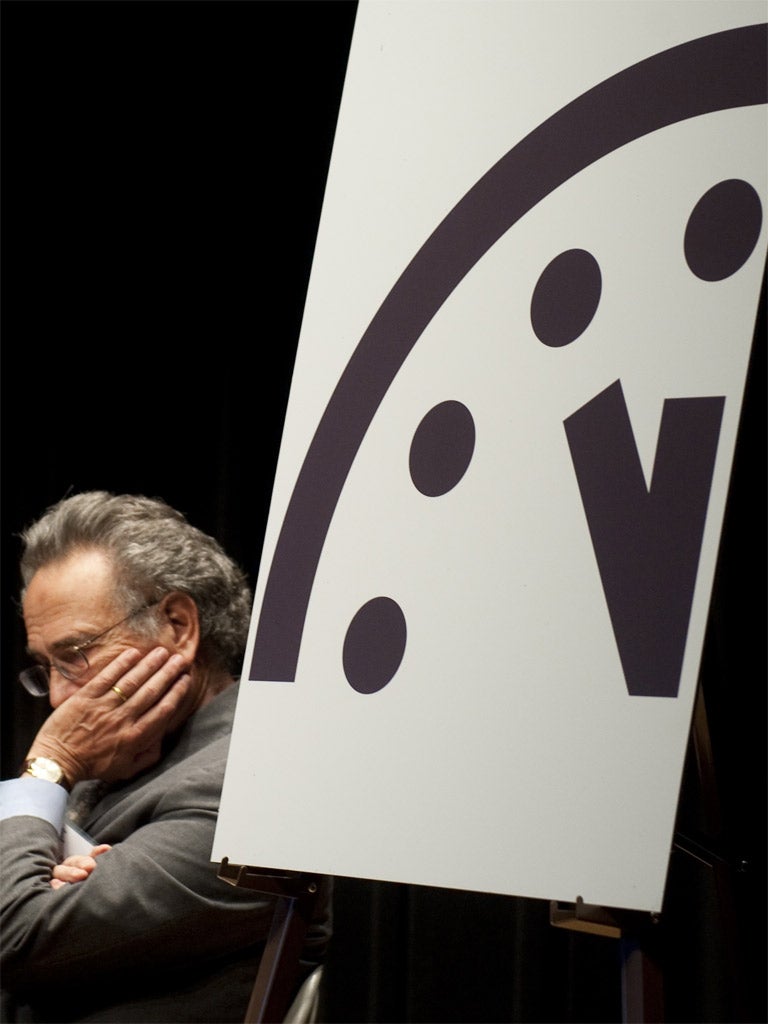Is that the time? End of world draws nigher still

For those who followed the natural disasters, nuclear meltdown and financial collapses of last year, it may not come as much of a surprise that the apocalypse is now one minute closer according to the Doomsday Clock, a symbolic measure which counts down to armageddon.
The minute-hand on the 64-year-old concept clock has edged forward to show that "inadequate progress" has been made on containing the global threat posed by nuclear weapons and climate change, said scientists. It now shows five minutes to midnight (the zero hour).
"Two years ago it appeared that world leaders might address the truly global threats we face. In many cases, that trend has not continued or been reversed," the Bulletin of the Atomic Scientists (BAS), said.
In a list of reasons for raising the danger bar, the BAS said it finds the current potential for nuclear conflict in the Middle East, north-east Asia and south Asia alarming. It accuses the US, China, Iran, India, Pakistan, Egypt and Israel for failing to act on the Comprehensive Nuclear Test Ban Treaty, and North Korea for its nuclear weapons programme.
It also says the disaster at the Fukushima nuclear plant, in the wake of Japan's earthquake and tsunami last year, has "raised significant questions" about the safety of nuclear reactors, and warns that a lack of action on global climate change continues to cause concern.
The Bulletin, produced by scientists at the University of Chicago, established the Doomsday Clock in 1947 less than two years after the US dropped atomic bombs on Japan. Some of the experts who founded the clock had worked on the A-bomb.
In 1947, the clock first displayed seven minutes to midnight, but the minute hand has since moved backwards and forwards 20 times as the perceived threat of disaster has intensified and calmed. The gauge was initially based on the risk posed by nuclear threats but was widened in 2007 when the Bulletin deemed climate change to be one of the greatest risks facing humankind.
Join our commenting forum
Join thought-provoking conversations, follow other Independent readers and see their replies
Comments
Bookmark popover
Removed from bookmarks